Voigtlander Nokton 10.5 mm f/0.95
4. Image resolution
Now let’s check how the tested lens compares – an appropriate graph you can find below.
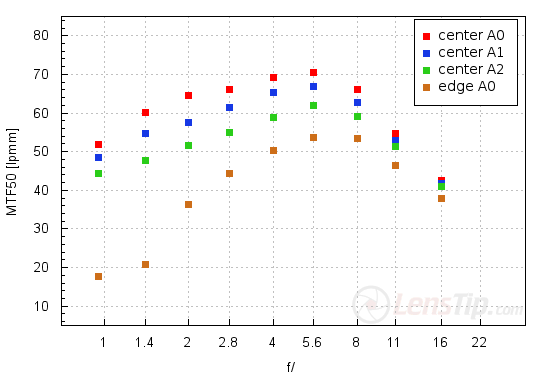
Please Support UsIf you enjoy our reviews and articles, and you want us to continue our work please, support our website by donating through PayPal. The funds are going to be used for paying our editorial team, renting servers, and equipping our testing studio; only that way we will be able to continue providing you interesting content for free. |
- - - - - - - - - - - - - - - - - - - - - - - - - - - - - - - - - - - - - - - - - - - - - - - -
The graph is a bit different from the one we have usually the pleasure to present. The measurements we normally show here are an average value of results reached on 2-3 testing charts we employ during the test. Here we didn’t evaluate any average value, we decided to show results in the frame centre as we got them – separately for every testing chart. You know why after just one glance. The lens performs the best when the focus is set at longer distances and the weakest results you see near the minimum focusing distance. The field curvature distinctly influences that situation (after all it is also an optical aberration you have to criticize) but it is not the only culprit.
Still it is a fact that the Nokton 0.95/10.5 is going to be used the most often with its focus ring set in a range from one meter to infinity; results for that range are shown by our biggest A0 chart and we are going to deal with its detailed description first.
MTFs on a level of 50 lpmm you see at the maximum relative aperture are a very positive piece of news. They mean in the very frame centre the image remains fully useful even by such an excellent aperture as f/0.95. Unfortunately strong axis and off-axis aberrations we are going to describe in more detail in the next chapters don’t allow this lens to spread its wings; on stopping down the aperture its resolution doesn’t increase as quickly as you saw in the case of other f/0.95 Noktons. As a result the maximum MTFs of the tested lens barely exceed 70 lpmm and these values are more typical of cheap system “pancakes”. The lens falls short of the expectations and is by about 10 lpmm weaker than other Noktons. It is, unfortunately, a big difference.
The edge of the frame is quite another matter. Due to joint forces of huge field curvature and badly corrected off-axis aberrations the images near the maximum relative aperture are of dreadfully low quality. If you want to take a shot from a close distance you see nothing in the frame. The 1:1 crops, shown below, taken from the upper left-hand corner of the photos of our A0 and A2 format charts, prove that much very clearly.
| Olympus E-PL1, f/0.95, corner A0 | Olympus E-PL1, f/0.95, corner A2 |
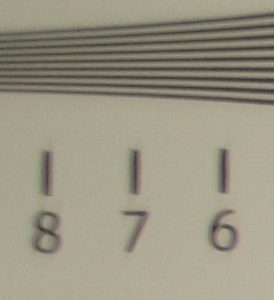
|
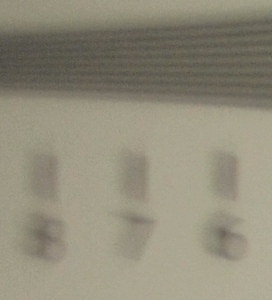
|
You can delude yourself into believing that taking photos from greater distance would somehow make the situation better. Unfortunately it is not the case. Below there are crops taken from shots of a row of tenement buildings, photographed from a distance of more than a dozen meters so, for this type of the lens, with the focus practically set at infinity. Once again for the comparison we chose the upper left-hand corner. Looking at it do keep in mind the fact that the Olympus cameras’ software, even if set at the lowest sharpening level, interfere quite significantly. If, even after a lot of sharpening you still get a result like the one presented below it is obvious that the Nokton has to be stopped down to at least f/2.8 in order to provide a decent image quality on the edge of the frame. Our resolution graph results are in perfect accordance with that conclusion: by f/2.8 the MTFs reach almost 45 lpmm so a value which, in our opinion, constitutes a decency level.
| Olympus E-M10, f/1.4, corner | Olympus E-M10, f/2.0, corner |
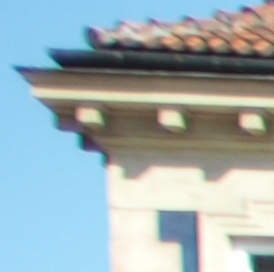
|
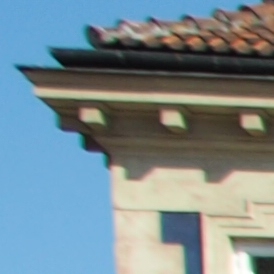
|
To sum up the only advantage we see here is a useful image quality in the frame centre at the maximum relative aperture. Unfortunately neither the image quality in the frame centre on significant stopping down nor the image quality on the edge of the frame match up to our expectations concerning an expensive, fast prime manufactured by a very renowned producer.
At the end of this chapter traditionally we present crops taken from photos of our resolution testing chart which were saved as JPEG files along with RAW we used for the analysis above. Please notice that the further you move away from the frame centre the quicker image sharpness decreases.
| Olympus E-PL1, JPEG, f/0.95 |
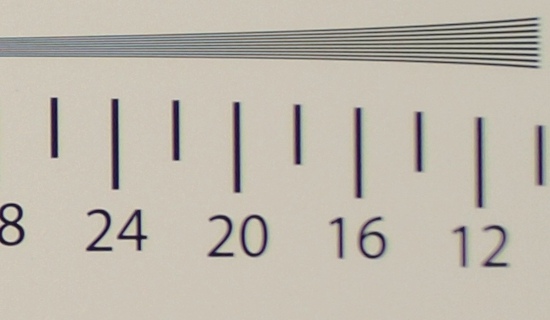 |
| Olympus E-PL1, JPEG, f/4.0 |
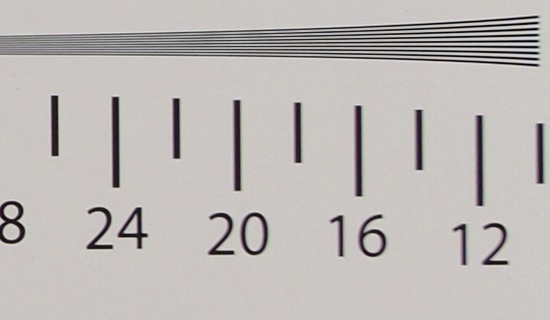 |






